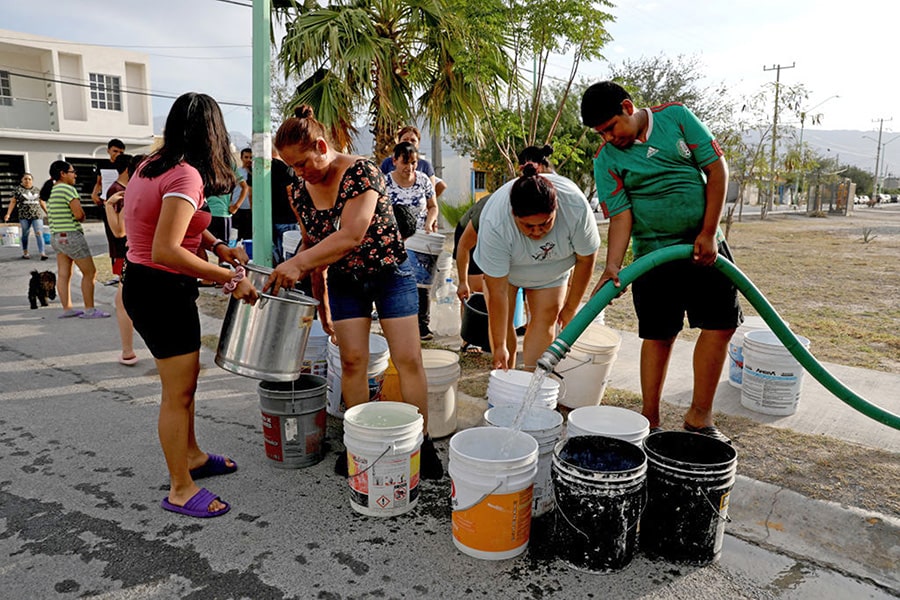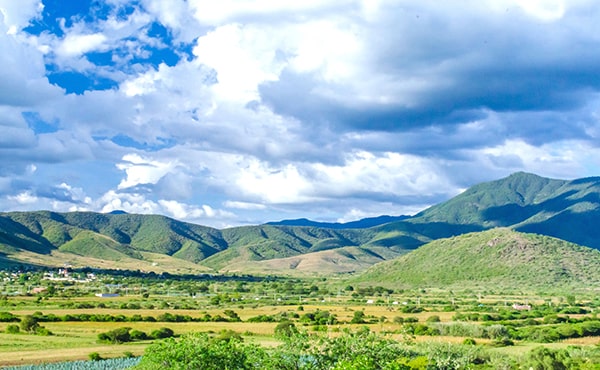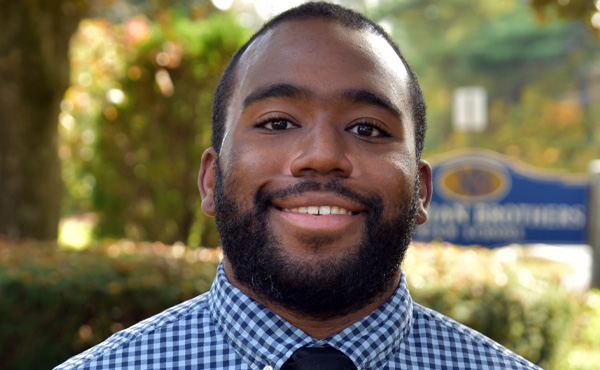Research by physics professor Robert Nazarian and his students predicts significant climate changes in northern Mexico — with implications for everyone.
Students were involved in every aspect of the project… I really treat them as true collaborators, which includes taking part in the scientific decision making process.
— Robert H. Nazarian, PhD
When one considers the disastrous effects of climate change — rising oceans and other weather disasters — usually it is the prospect of these calamities happening close to home that we care most about.
But there are ripple effects to be considered too — how drought or flooding in one area has knock-on effects in neighboring regions — or so suggests the research of Robert H. Nazarian, PhD, associate professor in the Physics Department in the College of Arts and Sciences, in a study recently published in the preeminent Journal of Climate.
Dr. Nazarian is a specialist in the physics that governs the ocean, atmosphere, and climate. He and a team of Fairfield undergraduate research students, along with partners at Scripps Institution of Oceanography at the University of California at San Diego, have focused their lens on northern Mexico, an area where — to date — little work has been done to project future trends in rainfall and drought.

Dr. Nazarian’s research indicates that hydroclimate extremes are poised to intensify with ongoing climate wa.
According to this study, using publicly available data that was created as a sub-project by the United Nations Intergovernmental Panel on Climate Change (IPCC), Dr. Nazarian and his students, through deep analysis using the complex mathematics of thermodynamics, have shown that northern Mexico can expect to see extreme weather events increase over the next 100 years, which, the study implies, may contribute to the degradation of the economy in this farming region, and potentially increase migratory pressures on the population.
The spiny peaks of the Sierra Madre Occidental mountain range are the backbone of northern Mexico and run along the Gulf of California, which yields to lush valleys with rich soil that has provided the agricultural bounty for which the territory is known.
Home to more than 32 million people, the region is of significant economic importance. The area includes three distinct hydroclimatic regions, all of which regularly experience severe heat stress and flooding and are highly susceptible to future changes in precipitation.
Using a suite of high-resolution climate models from the IPCC climate, Dr. Nazarian and his research group investigated projected precipitation trends over the region between 2081 and 2100 and found that the frequency of extreme precipitation events is expected to double throughout the region over the next 100 years, exacerbating the flood risk for northern Mexico with implications for the agricultural sector, economy, and infrastructure, as well as public health.
The region accounts for 27 percent of Mexico’s gross area dedicated to agriculture and 32 percent of its agricultural revenue (INEGI 2020). Without proper adaptation, substantial precipitation changes— as a result of future warming — could lead to major social and economic disruptions.
Dr. Nazarian and his team compared model simulations of past climate with historical observations to show that the model can accurately capture the relevant physics to predict precipitation. The models themselves are based on many equations from physics that characterize the atmosphere, ocean, and climate.
“Students were involved in every aspect of the project,” Dr. Nazarian said. “I really treat them as true collaborators, which includes taking part in the scientific decision-making process.”
The study found that hydroclimate extremes are likely to be exacerbated as the climate warms. The drought period is predicted to extend much longer than previously thought (by two or three weeks), and the rainy season is predicted to receive significantly more precipitation, by as much as ten percent, by the end of the century.
Results also suggest that the frequency of extreme precipitation will increase, with the strongest storms becoming 20 percent more frequent per degree of warming.
“This research also highlights the issue of climate data equity,” said Dr. Nazarian, explaining that while these kinds of studies are often done for regions in the United States and other developed countries, it isn’t as common in other areas. “There has been very little focus on regions and countries where there are relatively few climate modeling centers— regions where the impacts of climate change could be particularly acute.”
Study co-author, Nick Lutsko, PhD, assistant professor of climate science at Scripps Institution of Oceanography/UCSD added, “This work is exciting because we were able to produce some of the first projections of precipitation change over this region, and also provide some insight into what causes these changes.”
And what is, precisely, causing these changes? Dr. Nazarian points to the already extreme weather events in the area, which are influenced by high emissions of greenhouse gases that the study deems “anthropogenic,” referring to environmental change caused or influenced by people, either directly or indirectly.
“There is always going to be some natural variation in the climate,” Dr. Nazarian said. “We’ve seen it over millennia. But, the magnitude of what we’re seeing here really surpasses that, which does suggest that it’s human-induced.”
“[This study also] has a number of epidemiological implications, which is not something we that we address in our work, but is important nonetheless,” he continued. “For instance, Dengue is a disease that depends very much on temperature and humidity, and with changes in precipitation and prolonged heat stress there is risk for potential spread of such tropical diseases.”

The study found that the frequency of extreme precipitation events is expected to double throughout the region over the next 100 years.
Dr. Nazarian, on faculty at Fairfield since 2018, is at work developing plans for future climate exploration with undergraduates. Prior to joining Fairfield, he was a lecturer in the Geosciences Department at Princeton University, where he received his doctorate in atmospheric and oceanic sciences.
One of Dr. Nazarian’s key areas of focus in working with Fairfield undergraduates is mentorship. For this recent climate research study, he guided three students: Brody Matijevic ’25, James Vizzard ’23, and Carissa Agostino ’23. Co-authors of the project, he calls them “The Nazarian Group.”
“It’s important to remember that these are undergraduates,” said Dr. Nazarian, a 33-year old himself, originally from Rhode Island, “not graduate students and post-docs doing this work, which is a culture that is unique to Fairfield. In the field of climate science, it’s incredibly rare for undergrads to give oral presentations at a national conference.”
Matijevic, a current junior from Marlborough, Massachusetts with majors in both mechanical engineering and physics, said he’s enjoyed his work with The Nazarian Group for the past two years.
“There have been many great opportunities that have come from it,” he shared. “I’ve learned coding skills as well as earth climate dynamics and the importance they have in science.” Matijevic is planning to pursue a PhD in applied physics after graduation next year.
Carissa Agostino ’23, a recent graduate and physics major who now holds a position as a research scientist at BAE Systems, Inc., an aerospace and security solutions company, said “doing research with Dr. Nazarian prepared me for a career in science.”
Addressing the overall climate question in general, Dr. Nazarian offered, “I think it’s really important to think about it from an interdisciplinary perspective and the role that everyone has in using their own skills to address the climate. Everyone can play a role and use their diverse set of skills to make measurable progress.”








